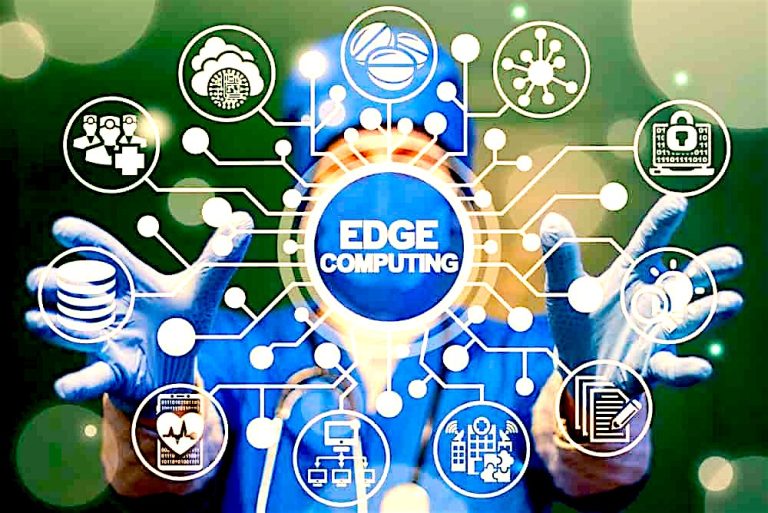Edge Computing has become one of the most transformative trends in the digital era, redefining how organizations handle data, process information, and deliver faster services. In a world where milliseconds can shape business decisions and user experiences, edge technologies are bridging the gap between centralized data centers and end users. By moving computation closer to the source of data, it allows real-time responses that traditional cloud solutions often cannot match.
Evolution of Edge Computing
The journey of Edge Computing begins with the limitations of centralized cloud systems. While the cloud revolutionized storage and computation, industries soon discovered that distance and latency often slowed down critical operations. For sectors like healthcare, autonomous vehicles, or manufacturing, delays in processing data could mean life-altering consequences. This is where edge emerged as a natural evolution.
Instead of sending every piece of data back to remote servers, edge brings processing closer to the devices generating it. This distributed model ensures faster analysis and decision-making. From the early stages of content delivery networks to today’s sophisticated IoT-based frameworks, the evolution of edge represents a major technological shift.
Why Edge Computing Matters Today
The importance of Edge Computing lies in its ability to provide speed, reliability, and efficiency. Consider a smart city where traffic lights, sensors, and connected vehicles communicate constantly. If every signal had to be processed through a distant cloud server, delays could cause chaos. By enabling local processing, edge ensures that decisions are made instantly, keeping systems safe and effective.
Another critical factor is bandwidth. With billions of devices generating data daily, networks face immense strain. Edge reduces this burden by filtering and analyzing data locally, sending only essential information to the cloud. This balance makes it a cost-effective and scalable solution for modern enterprises.
Real-Life Applications of Edge Computing
The potential of Edge Computing becomes clearer when explored through practical examples. In healthcare, edge-enabled devices can monitor patients in real time, alerting doctors instantly if irregularities occur. In autonomous vehicles, sensors and onboard systems process data locally to make split-second driving decisions. In retail, smart shelves and cameras provide instant updates about stock levels, improving efficiency and customer experience.
Even entertainment industries benefit. Gaming platforms use edge to minimize lag, offering smoother experiences for players worldwide. In factories, predictive maintenance systems analyze equipment performance directly at the site, preventing costly breakdowns. These examples show how edge goes beyond theory, becoming a cornerstone of modern innovation.
Edge Computing and IoT Growth
The rise of the Internet of Things (IoT) has amplified the demand for Edge Computing. Billions of connected devices constantly generate streams of data. Without localized processing, the cloud would become overwhelmed. Edge works hand in hand with IoT, ensuring devices remain efficient, secure, and responsive.
Smart homes, for example, rely on edge to keep devices like thermostats, security cameras, and voice assistants responsive without depending on distant servers. Industrial IoT systems, on the other hand, rely on edge to maintain uninterrupted production and safety in factories. The synergy between IoT and edge demonstrates why both are often discussed together as the foundation of future technology.
Security and Privacy Advantages
An often-overlooked strength of Edge Computing is its role in enhancing data privacy and security. By processing sensitive data locally, organizations reduce the risk of transmitting large amounts of private information across long networks. Healthcare data, financial transactions, and personal identifiers can remain closer to the source, minimizing exposure to cyber threats.
Furthermore, local processing ensures compliance with data protection regulations in regions that impose strict requirements. By keeping sensitive data on-premises or nearby, edge provides a safer alternative while still offering the efficiency of modern computing.
Edge Computing vs Cloud Computing
While Edge Computing and cloud often work together, they serve distinct roles. Cloud provides vast resources for storage and large-scale analytics, while edge focuses on speed and proximity. For example, a fitness wearable might analyze heart rate data instantly at the edge for quick alerts, while the cloud stores long-term data for medical research.
This partnership ensures the best of both worlds. Edge handles time-sensitive tasks, and cloud manages long-term, large-scale processes. Rather than replacing one another, they create a hybrid ecosystem that maximizes efficiency, speed, and scalability.
Future of Edge Computing in Industries
Looking ahead, Edge Computing is expected to redefine multiple industries. In telecommunications, 5G networks combined with edge will deliver unprecedented speed and connectivity. In agriculture, edge-driven drones and sensors will optimize crop management and resource use. In energy, smart grids will rely on edge to balance loads and respond instantly to demand changes.
The education sector is also embracing edge, with digital classrooms using real-time analytics to personalize learning. Even entertainment platforms like streaming services are using edge to ensure smooth video delivery, reducing buffering for millions of users globally.
Business Benefits and Strategic Value
Organizations investing in Edge Computing are discovering long-term advantages. Reduced latency improves customer experiences, while lower bandwidth use saves costs. Operational efficiency rises as critical data is processed instantly, enabling proactive decision-making.
From startups to global enterprises, businesses recognize that being closer to customers and data sources is not just a technical shift—it’s a competitive advantage. Those adopting edge early are positioning themselves as leaders in their industries.
Expert Perspectives on Edge Computing
Technology experts agree that Edge Computing is not just a passing trend but a necessity for the digital economy. Analysts predict significant market growth, with billions invested in infrastructure and solutions by 2030. This growth is fueled by the demand for real-time applications, smarter devices, and secure systems.
Thought leaders emphasize that organizations must build strategies that integrate edge seamlessly with cloud. Businesses that ignore this transition risk falling behind, while those embracing edge will thrive in an increasingly connected world.
Read also:
type of fok959s-m bed model
mpbbychoice4
is xupikobzo987model good
9196205300

